Chapter Links (Timestamps)
- Intro (0:00)
- Cajas – Dos Chorreras (01:31)
- Transport options – Cuenca to Guayaquil (02:36)
- Laguna Toreadora (03:40)
- Why are we trying to get to Mexico? (04:18)
- Buying a new (used) car (05:46)
- KM 49 & landslides (08:29)
- Fog! (09:29)
- Coming down the Cajas (10:22)
- Coffee stop (11:50)
- Road to Guayaquil (13:18)
- The heat (15:21)
- Near Guayaquil malecon (18:06)
- Our Airbnb (18:32)
- Michelle’s US visa appointment (fingers crossed) (19:30)
- Driving in Guayaquil is not fun (21:55)
Driving from Cuenca to Guayaquil is always an adventure, especially when passing through the stunning Cajas. This picturesque route takes around 3 to 3.5 hours, offering breathtaking landscapes but also presenting a few challenges due to its windy and high-altitude nature. Today’s journey is not just a scenic drive; it holds a specific purpose – securing Michelle’s US visa for an upcoming trip to Mexico. So, buckle up and join us on this road trip!
The Cajas Journey
The drive through the Cajas is a treat for the eyes, but it comes with its own set of considerations. As we navigate the winding roads, we’ll share a few tips to make this journey smoother for fellow travelers. The scenic beauty is worth the effort, and the Cajas’ unique charm makes it a must-visit on the way to Guayaquil.
Valentine’s Day in the Cajas
Coincidentally, today is Valentine’s Day, and we find ourselves near Hosteria Dos Chorreras, one of the Cajas’ gems. Known for its fantastic food, it’s an exception to our usual avoidance of buffets. The area is also renowned for trout fishing, offering a delightful experience for those who enjoy both fishing and a good meal.
Purpose of Mexico Trip
As we drive towards Guayaquil, Michelle sheds light on the main purpose of our upcoming Mexico trip. She’s attending a gathering of experts from various Latin American countries, focusing on the processes of death, dying, and grieving. The agenda includes intriguing topics such as green burials, home funerals, and the role of psychedelics in the dying process. The goal is to gather insights and bring this knowledge back to benefit our community in Cuenca.
Car Upgrade Plans
Aside from the visa adventure, there’s another significant change on the horizon – upgrading our car. Our trusty Volkswagen Gol has served us well for around five years, but with our family growing, we need a larger vehicle. The Toyota Highlander and Hyundai Santa Fe are top contenders, with the Highlander’s hybrid option catching our interest. However, the decision is not without its complexities, considering factors like the age of the car and potential challenges in finding the right model in Cuenca.
Chinese Cars and Car Market Challenges
While exploring car options, we considered Chinese cars briefly. However, the steep depreciation and certain market challenges made us reconsider. The Ecuadorian car market, with its high taxes, presents its own set of hurdles. Additionally, the availability of preferred models might necessitate a trip to Quito.
Changes in Landscape
Descending from the Cajas, the landscape undergoes a dramatic transformation. The temperature rises, and we witness a shift in vegetation, moving from cold, high altitudes to warmer, tropical surroundings. The journey is not just about the destination; it’s about embracing the changing beauty along the way.
Reflecting on the Journey
As we cruise through the highway towards Guayaquil, passing fruit trees and enjoying the tropical scenery, the drive evokes memories of highways in Australia. The contrast between the cold Cajas and the warmth of the lower altitude is a sensory delight.
Guayaquil Arrival and Traffic
Arriving in Guayaquil comes with its own set of challenges – traffic being a prominent one. Navigating through Duran, just outside Guayaquil, we find ourselves in the midst of peak-hour traffic on Valentine’s Day. Guayaquil, with its hot weather and chaotic traffic, isn’t Jason’s favorite driving destination.
Guayaquil Exploration
Despite the challenges, we explore Guayaquil, sharing our impressions. The city’s heat, traffic chaos, and security concerns are acknowledged. We introduce the new teleferico, a predominantly touristic attraction, and give a glimpse of our Airbnb located at the Malecon.
US Embassy Appointment
Michelle has an early morning appointment at the US Embassy, and strict security measures are in place. No phones or bags are allowed. The significance of obtaining the visa is emphasized, considering the potential implications for their Mexico trip.
Waiting in Guayaquil
With the appointment done, we wait in Guayaquil, juggling work and the anticipation of Michelle’s return. The plan is to head back to Cuenca for a short-term rental check-in, a reminder of the practical aspects of life amid exciting travels.
Wrapping Up
The wait is over, and Michelle emerges from the embassy with the coveted US tourist visa. The excitement for the upcoming trip to Mexico is now real. We cannot wait.
See you next time!
Further reading:
- Cuenca Real Estate
- Cuenca Apartments for Sale
- Cuenca Apartments Rent
- Pet Adoptions
- Cuenca Events
- Cuenca Deals
View full video transcript
Driving to Guayaquil for Michelle’s US Visa – Vlog 7 (Script)
Jason 00:01
Hey, welcome to today’s blog. We are driving from Cuenca to Guayaquil and we’re passing through the Cajas. This is the most direct way from Cuenca to Guayaquil – it takes around 3 hours, 3 and a half hours. It’s a beautiful drive, but there are a few things to watch out for. It’s very windy, it’s quite high. And so as we’re going through the Cajas, we’ll show you a few little tips, but we’re going to Guayaquil right now because we’re getting Michelle’s visa for the US. Why? So we can travel to Mexico. I don’t, I don’t really understand that part of it either but apparently, if you get a tourist visa for the US, you can also enter Mexico and Ecuadorians, they do need the visas now to Mexico. So hopefully we have an appointment there bright and early at eight, AM but we have heard it’s very, very busy so touch wood, everything goes very smoothly tomorrow. But the focus of today’s video is really just going to be on the drive from Cuenca all the way to Guayaquil. Hope you enjoy it.
Jason 01:31
And today happens to be Valentine’s Day and now we’re just coming up to Hosteria Dos Chorreras. This is one of the nicest restaurants, hotels, and event centers in the Cajas – certainly one of the biggest. They’ve got some really good food as well, so I don’t normally like buffets or our family we don’t really like buffets in general, but we make an exception for this one. It is fantastic and we highly recommend it. The other thing that this area is known for is the trout fishing. So there’s a bunch of like sport fishing places around here. You go and obviously, you pay a little bit of money and actually what you catch, you will buy and you will eat. I bet you’re almost guaranteed to catch a fish, so for someone like me, it’s actually really quite cool.
Jason 02:36
So you can see it’s starting to get a little bit more windy now, and that’s one of the features of this trip. And so most people, if you don’t have a car, there are two ways to do this trip. The 1st way, the cheaper way is with a little minibus, not a big bus. We do recommend one of the minibusses just because they’re a little bit better when it comes to steering and fewer accidents and why not. They’re around $12 maybe a dollar extra for every suitcase that you’re going to bring. The other option is the private driver and that generally costs between $100 and $150 depending on who you use. There’s a bunch of different people that do the route and especially if you have let’s say a group of people and a bunch of bags, this can work out to be the better option.
Jason 03:40
Here we are at Laguna Toreadora. We’ve just stopped for a very, very quick break. So it’s the main lagoon that you can check out as a tourist and so to get here you can just get the bus from Cuenca. The public bus. There is a bus stop just up there it’s not going to cost you much money. There are some nice easy trails that you can check out whilst you’re just walking around by yourself. But very important, you don’t go too far off the beaten track because… it doesn’t get me, don’t let my clothes fool you, I am dressed for Guayaquil. It does get really, really cold here at night, so you definitely don’t want to get lost and it does happen quite a bit. So please stay safe and go with the license guide if possible.
Jason 04:18
So we’re on our way to Guayaquil to get Michelle’s visa for the US so we can travel to Mexico. Michelle, why are we traveling to Mexico?
Michelle 04:27
So the main purpose of my travel is to get a lot of insight into what is going on in Latin America with the process of death, dying, and grieving. We’re going to be a gathering of around five to six different countries in Latin America, different people who are involved in the process of death and dying or who are people who help in this process like dead doulas, and tautologists. And we’re going to tackle some very interesting subjects, for example, green burials, home funerals, psychedelics in the process of dying and things like that and we want the insight of everybody on how they are handling these subjects in their own countries. We are also having some expositors from the US and other countries to expand our visions on what is going on around the world and my purpose with this is to bring all this knowledge back to Cuenca and see how we can help our community here too.
Jason 05:46
Hopefully, this is going to be our last trip to Guayaquil in our little Volkswagen Gol. We’ve had this car ever since we moved to Cuenca, so around five years ago now and it’s served us really well. It’s a little city run about basically, but our family has grown and we’re always taking like Michelle’s family members or my family as well when they come over to visit. And so we just need a bigger car. We basically need something with three lines of seats. And so that’s what we’ve started to look around for and we’ve pretty much picked out two different models of car that we’re looking at. One is the Toyota Highlander and the other is a Hyundai Santa Fe. And both of these are really good options because they have a spacious third line of seats. The Highlander, in particular, it’s a hybrid car and so that means it does have a battery, which is good because it’s going to save money on petrol. But at the same time that’s a bit of a risk. We’re not going to buy the car new, we’re probably going to buy it around 10 years old so the battery is definitely something that we need to look into a little bit more. But whether or not we can buy it in Cuenca is the key question as well. We’ve been looking around and there just seems to be a lot more of these types of cars at least, available in Quito. And so chances are we’re probably going to have to go up to Quito to buy the car and hopefully we can find one within the next month.
Jason 07:21
Even though we have this short list of two cars, we’ve been looking around for quite a while and we’ve looked at all of them and there are a ton of Chinese cars here as well that have hit the market and I’ll be honest we got pretty close to considering a brand new Chinese car. The biggest issue for me, was just the depreciation, automatically. Have a look at one of the Chinese cars that are like a year or two years old and they basically lose ten thousand dollars overnight or within the space of a year. So you might buy the car for twenty-eight thousand dollars but then you’re going to sell it for maybe 20.000 thousand a year later. So for me, that’s not great value. The other issue with cars here in general is that they are expensive. The taxes on the cars are really quite high. So a car for example that you might be able to get in the States for ten thousand dollars, you’re probably looking at 18 or or twenty thousand dollars here. And so that does really just change the options as to what is available.
Jason 08:29
So as you can tell, things get a bit different here. We’re at kilometer 49 and this road itself is obviously brand new, but it’s probably not going to last that long because they’re constantly having to repair and redo this section of the road because it’s just in a high earthquake zone. So we do have a lot of landslides and stuff like that here, which just destroys the road all the time, but at the moment it’s looking really good.
Jason 09:29
And the fog starts. Need to make sure your lights work here and make sure your brakes are checked. We did a car check in Cuenca before we left for the trip. We pretty much do that every time we go through the Cajas because it’s not a place where you want to get stuck.
Michelle 09:54
One of the things that I enjoy the most about this ride to Guayaquil is watching the clouds and how they come from the mountains to the sea. It’s just like a sea of clouds and it’s wonderful, especially if you catch the sunset. It’s amazing.
Jason 10:22
We’re now on the other side of the Cajas. We’re basically coming down and we’ve been battling fog and rain for the past half an hour so it’s been pretty slow going but what you can really notice here is the change in the temperature, change in the vegetation. It’s just a completely different world. Up at the Cajas, it was very cold and very high whereas now we’re getting more towards sea level and we’re starting to see banana trees and more sort of tropical-based plants.
Jason 11:50
We’ve just come down the other side of the Cajas, grabbed a coffee to refuel and we’re going to continue along the way. The thing that you notice first when you come over to the Cajas, immediately step out of the car and it just hits you like a ton of bricks – it is hot. The temperature change is really quite significant here. It’s probably going to take us another hour, an hour and a half to get into Guayaquil. This part of the journey is going to be very chilled. It’s basically just like 1 long road from here and of course, the traffic once we get to Guayaquil is probably going to be a little bit chaotic but apart from that smooth sailing.
Jason 13:18
We’re on the highway now towards Guayaquil, it’s a nice easy bit of road. There’s a whole bunch of fruit trees around. So we’ve got bananas over here. We’re passing cacao all the time and I really like this part of the drive because it reminds me of a highway in Australia. Just cruising along the East Coast maybe up along Bundaberg or something like that with all the different types of fruit trees and the sugar plantations and stuff like that so I really enjoy this part of the journey. And I think the heat as well just reminds me of home once you get over that, that Cajas, and the temperature completely changes and we’re going to start sweating quite a lot now towards Guayaquil.
Michelle 15:21
Can I get a close caption of your sweat?
Jason 15:24
All right yeah, it is pretty hot.
Michelle 15:27
Are you still loving it?
Jason 15:28
I don’t hate it. Yes, it’s a little bit uncomfortable, but I like the warm weather.
Michelle 15:34
What was the other reason why we’re changing cars now?
Jason 15:39
I mean for me I don’t care, but for you, I’m hearing AC is a big deal. Oh yeah, but we don’t normally come to the coast that much like maybe once or twice a year. But for those once or two times per year, it is going to be nice to have.
Michelle 15:53
And what about this traffic?
Jason 15:57
Yeah, we’re in Duran right now, which is just the other side of the river to Guayaquil. So we’re not long, maybe 5 or 10 minutes out, but of course, we’ve managed to hit the traffic close to peak hour on Valentine’s Day. So there’s people going everywhere and honestly, Guayaquil is probably my least favorite place in Ecuador to drive. It’s just chaotic and I never know if I need to be super offensive or super defensive in Guayaquil so I end up doing a little bit of both.
Welcome to Guayaquil.
So now we’re in the nice part of Guayaquil down near the Malecon. This is also close to where we’re staying tonight. We don’t like Guayaquil the most. I think it’s fair to say out of all the cities in Ecuador, one is hot. Two, the traffic tends to be a little bit chaotic, and three, just the security side of things. But right up here you can see this is the new, what do I call it, the teleférico.
Michelle 18:06
This is the new teleférico of Guayaquil. It’s supposed to be mostly touristic.
Michelle 18:32
Welcome.
Jason 18:33
This is our Guayaquil apartment for the night. We booked this on Airbnb. Michelle found it. It’s really quite cheap actually. How much was it?
Michelle 18:45
It was $40 but it’s located in the Malecon. It’s called the Riverside Building. It’s really nice.
Jason 18:55
Nice map of the world there. Kind of like that. That’s a cool, nice little touch. The rest of it is, honestly, it’s pretty basic, you know, general Airbnb stuff, nothing too exciting, but, for $40 really not too bad. A nice little bedroom here, let’s have a look at the bathroom. Pretty standard. Yeah, so look, standard fare, but 40 bucks per night, right on the Malecon. Let’s go get a beer.
Jason 19:30
Good morning. We survived the night in Guayaquil. We did have a lovely little dinner last night. It was Valentine’s Day. Love was in the air there were lots of couples out, you know, kissing, cuddling and lots of flowers were being given. I didn’t actually buy one for Michelle because she doesn’t like cut flowers. She prefers plants, so hopefully on the way home we have enough time to stop by one of the nurseries and we can pick up a little bit of a surprise for her. We just didn’t really do much last night, we went to a Lebanese restaurant, and the drink specials won. It was 4 Micheladas for $12 and so we saw that on the sign and were like, “OK, that’ll do”. And we weren’t really hungry. But the Lebanese food was good without being amazing. Would I eat it again? Yes, I would go back there, but I would also be tempted to try one of the other, I don’t know, dozen restaurants that were basically on the Malecon as well here in Guayaquil.
Jason 20:26
Last night was fun. Michelle and I had a nice little, you know, date night for Valentine’s, but we did have to get up super early this morning because she had an appointment or she still does, actually. She’s in there right now at the US Embassy here. And some important note about that is they do not let you in with anything. So if you do have to go to the embassy for an appointment, you won’t be able to take your mobile phones, you won’t be able to really take anything like bags and stuff like that they just won’t let you in. Leave those rocket launchers at home as well. They definitely frown upon those. She has some money in her pocket, but that’s basically it, money for the taxi so she can get back here hopefully within a couple of hours with the approval. Because if she doesn’t get that approval, I don’t really know what we’re going to do because we don’t have a backup plan. She’d have to go to the Mexican embassy and try and beg and plead, I guess. But those appointments are getting harder and harder to come by too. And we’ve already paid for the trip to Mexico so fingers crossed she gets that approval or we’re going to just basically lose a bunch of money.
Jason 21:32
And so today we are just going to wait. I’m going to hang out here and do a little bit of work in the office. I have a bunch of stuff that I need to catch up on, but we do need to motor back to Cuenca because we have a short-term rental check-in that we need to facilitate. This means that obviously, we need to physically be in Cuenca to do that. So fingers crossed the appointment doesn’t take too long and we get back in time.
Jason 21:55
One quick note, I did have to take Michelle out this morning to the embassy – I dropped her off there. Without coffee for me, driving at six AM in Guayaquil is not fun. I really don’t like it. I did get lost three times on the way back from the embassy to the hotel, and one of those times was actually quite bad. I did lose another 15 minutes there. There are just no road markings. That’s probably the thing that really annoyed me the most. There’s a lot of new work, obviously, which is good that the roads actually get done, but then they don’t finish it off with the lane marking so you don’t know which lanes you need to be in. So Google Maps will tell you one thing and in theory, you know how to get there. But when it comes to actually getting there and choosing the lane with all the flyovers and under, and I don’t know whatever else they have here, it did prove to me to be quite difficult and I really didn’t enjoy it this morning, especially without coffee. But I was able to fuel up. I found some coffee at just a little gas station, not too bad. I think it costs like $2.20 so yeah, happy days. Hopefully, Michelle will get here very, very soon. Fingers crossed.
Jason 22:58
Oh, she’s here. She’s just knocked. How’d you go?
Michelle 23:10
I got it!
Jason 23:10
We’re going to Mexico?
Michelle 23:12
Yes, we’re going to Mexico.
Jason 23:17
Wiiii. We’ll catch you in the next video. Ciao ciao.
Michelle 23:18
Bye.


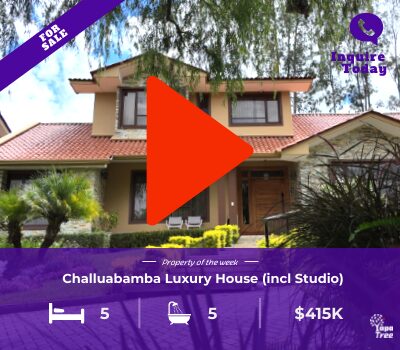







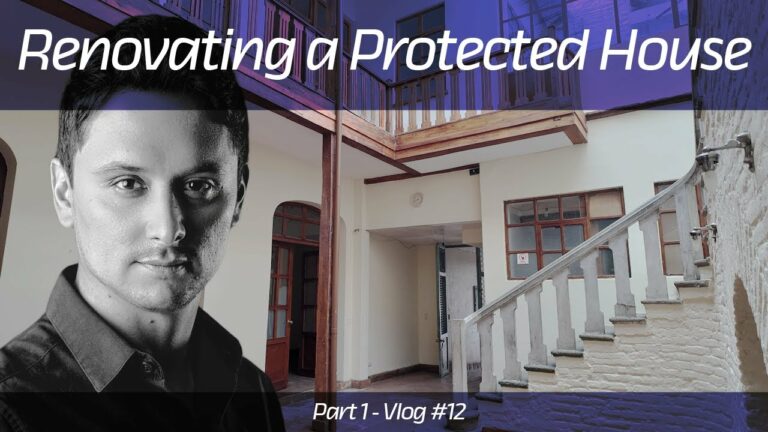

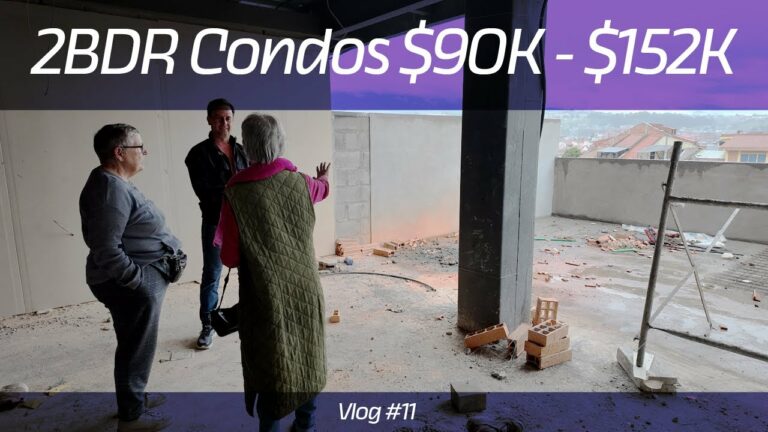

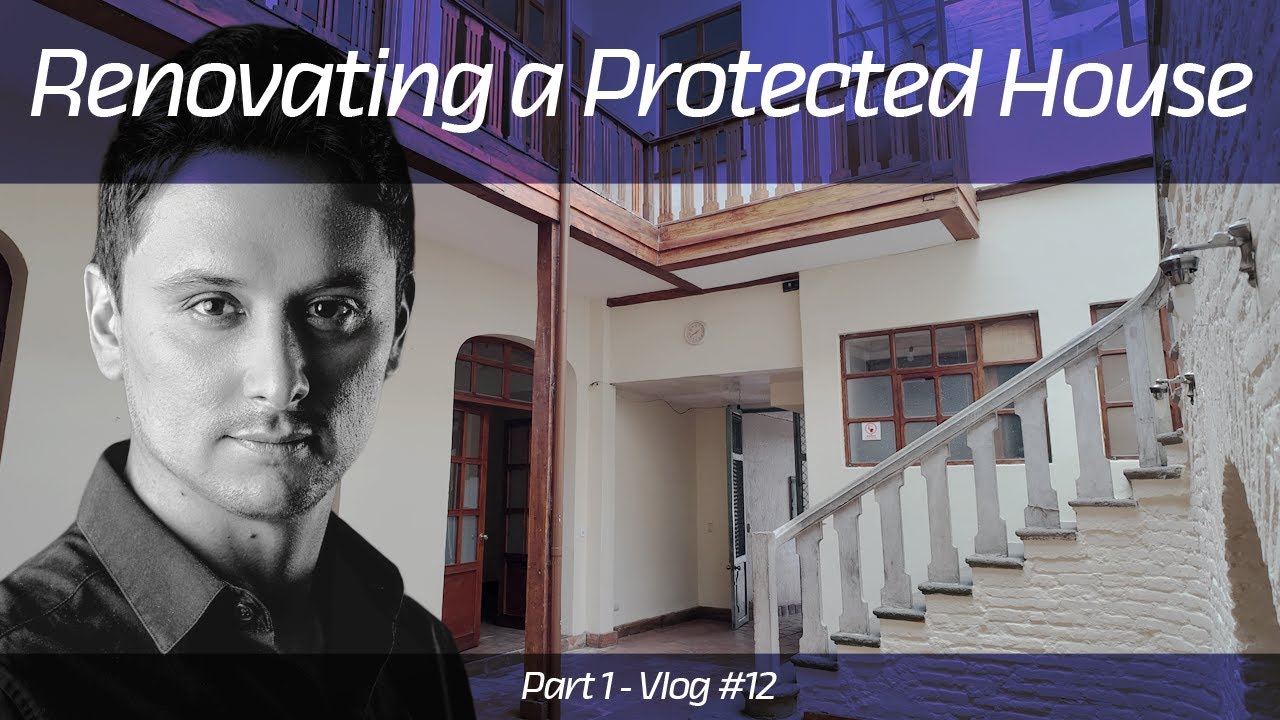
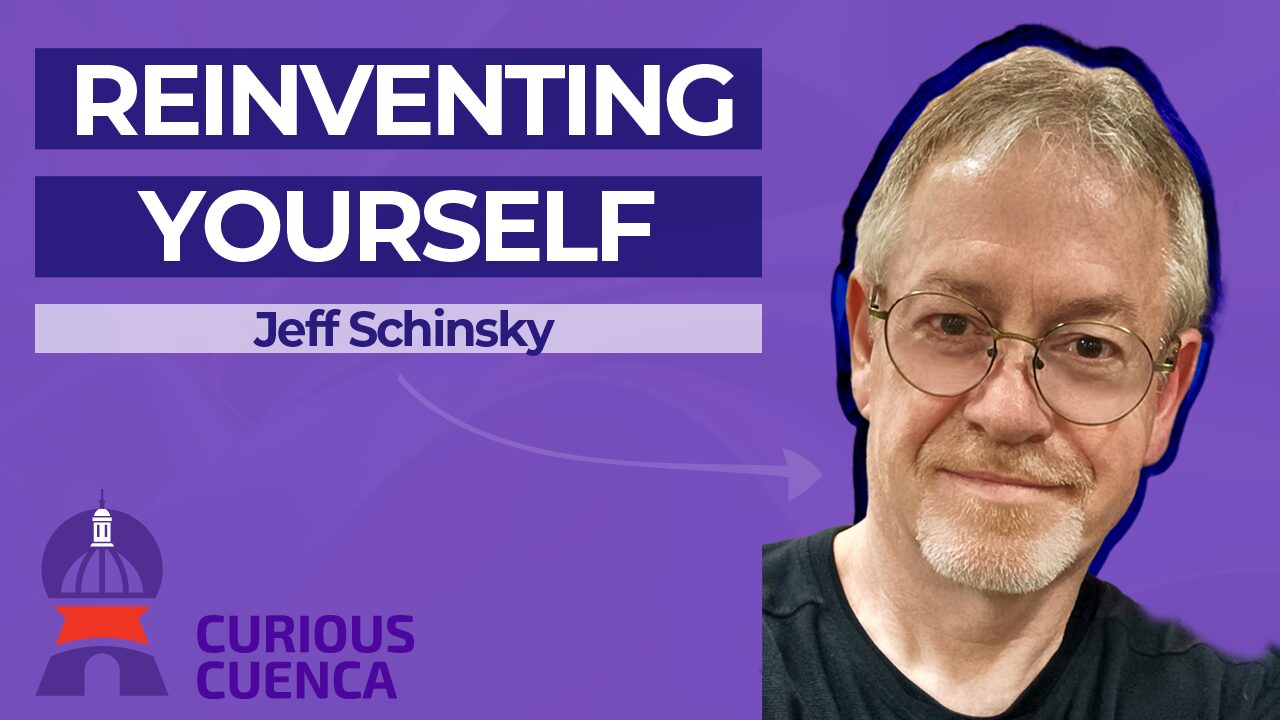

One Response
This was really fun and informative, especially useful to me as I will be taking a car to Guayaquil soon to fly out of GYE. Now I know to make sure to ask the driver if his car has a/c, fog lamps, and good suspension! haha! I’m told it’s safe to fly out of Guayaquil but safer to fly back to Cuenca via Quito especially if you come back with significant luggage. Thanks! Congratulations on that visa!